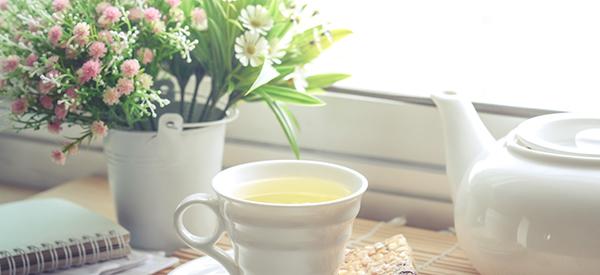
Spring Tea Recipe
After coming out of a long winter we all need to refuel and reenergize our minds and bodies. It’s the perfect time to get outside and celebrate warmer weather and longer days on the way. In China, where tea is heavily revered, they divide their teas into seasons. Spring Tea refers to the first leaves that are harvested at the beginning of spring. The leaves are rich in nutrients and the resulting tea is beneficial to the mind and body.
We’re going to make our own Spring Tea recipe today to lift our spirits and boost energy levels. While all types of tea have their own healthy properties, we’re going to use matcha powdered tea today with four other complementary ingredients. Before I show you how to make it, let’s look at the health benefits the ingredients possess.
Medicinal Benefits of This Spring Tea Recipe
This Spring Tea is light and refreshing and can be made with easy-to-find ingredients. One thing to note is that the lower grades (and usually cheaper) Matcha powders are for cooking and don’t mix into a tea so well. You may need to order this online (ceremonial grade is good if you can find it). Also, I add honey to mine but feel free to leave this out or swap it for your favorite sweetener. It does come with its own healing properties though.
Health Benefits of Matcha and Green Tea
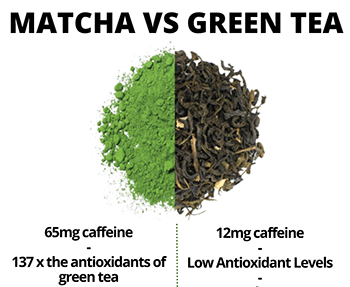 Matcha and green tea come from the Camellia sinensis plant and the leaves are ground into a fine powder.
Matcha and green tea come from the Camellia sinensis plant and the leaves are ground into a fine powder.
They are high in epigallocatechin gallate (EGCG) which aids weight loss, something that can be very useful after winter! Matcha has a higher concentration of EGCG and other nutrients than all types of green tea due to the fact the entire leaf is used to make the powder.
They contain L-theanine which increases activity in the brain and changes the effect of the caffeine by avoiding crashes in energy that are often accompanied by caffeine intake. These two compounds will help keep you alert and improve brain function. They aren’t just for spring though and are great to drink all year. They’re very high in antioxidants, so help protect against many chronic diseases. They also lower bad cholesterol, decrease your chance of developing heart disease or having a stroke, and prevent liver damage.
Health Benefits of Ginger
Ginger can also help with weight loss, making us feel lighter in spring and ready to bounce into summer. As well as this it improves brain function and gives you more energy by reducing oxidative stress in the brain.
It’s useful for people who suffer allergies in the spring because of its anti-inflammatory properties which are thought to prevent and/or alleviate symptoms from pollen allergies. Ginger also has many bioactive compounds and nutrients that work to prevent cancer, lower bad cholesterol, and reduce the risk of heart disease.
Health Benefits of Ginseng
Another one for the mind and brain, Ginseng is great for combatting mental fatigue and improving your concentration, and lifting your mood. It also helps the body and increases your energy levels by lowering oxidative stress and increasing energy production in cells.
Ginseng can lower blood sugar levels and increase insulin production and has even been proven in some studies to help reduce free radicals in people living with diabetes. It will also keep your immune system strong in general, helping to ward off illnesses and speeding up recovery if you do get sick.
Health Benefits of Honey
Honey is also good for the brain as it’s a mood booster and has antidepressant qualities, plus it sharpens the mind. It will give you a quick bout of physical energy too as it’s a source of carbohydrates rich in glucose and fructose. It’s also high in antioxidants helping your metabolism.
Health Benefits of Water
Water plays a role in every vital bodily function. Staying hydrated is essential because it helps move oxygen around the body, otherwise, we get tired physically and mentally. It also acts as an appetite suppressant as well as speeding up your metabolism and helping to burn calories faster.
It’s also beneficial to your mind by reducing cortisol, the stress hormone. To stay hydrated, we need to drink at least eight cups of water a day, even more depending on certain factors such as climate and the amount of exercise undertaken.
How to Make This Spring Tea Recipe
The quantities I use below are for one serving and will have approximately 21 calories (if you use honey).
Equipment
- Small pot
- Mug
- Teaspoon
- Tea infuser (if you use fresh leaves)
- Fine grater (if you use fresh ginger)
Ingredients
- 1 teaspoon of Matcha green tea powder (or 1/2 teaspoon of fresh green tea leaves)
- ½ teaspoon of ginger powder (or 1 tablespoon of grated fresh ginger)
- 1 ml of Ginseng extract
- ½ teaspoon of Honey
- 1 cup of water (or more or less to fill your preferred sized-mug)
Method
I like to use a small pot instead of a kettle when making matcha tea because you shouldn’t pour boiling water over it and I find it easier to gauge the water in a pot. Feel free to use your kettle to boil the water first and then open the lid and wait for a few minutes. The reason you shouldn’t use boiling water is that it makes the tea taste bitter and ruins the nutrients. You should be aiming for 160°F/70°C. In Japan, it’s often stated that the higher quality the matcha the lower the water temperature should be to allow the real flavors to come out.
Here are the steps to make this tea:
Prepare your water by putting it in your pot and turning on high heat (you want to take it off the heat when you see tiny bubbles forming and steam rising).
Add 1 teaspoon of matcha to your mug (or your fresh tea leaves in a tea infuser) and ½ teaspoon of ginger powder (or your freshly grated ginger).
Pour over the water when it’s ready and give everything a good stir.
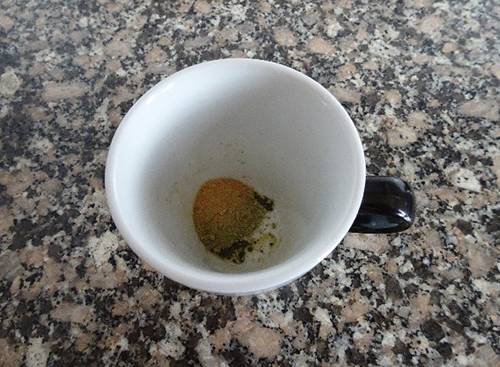
Add ½ teaspoon of honey now if you want to use it or the sweetener of your choice and give another stir.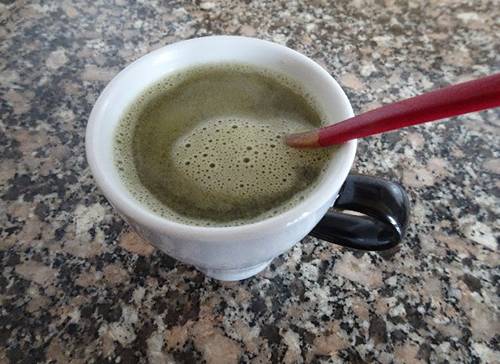
Finally, squeeze in 1 ml of Ginseng extract and stir one last time. Your spring tea is ready. (Note: If you’re using fresh green tea leaves, remove the tea infuser after a couple of minutes, and then it’s ready).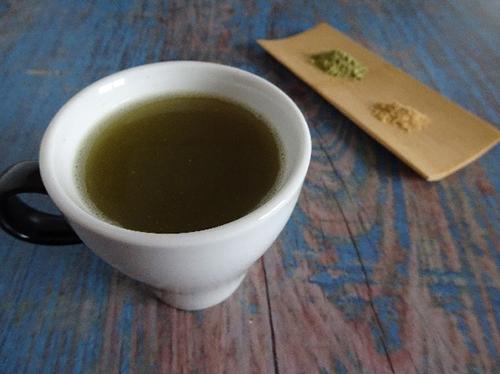
You can drink this up to two times a day. Just remember that matcha has caffeine in it so if you’re sensitive to caffeine then don’t drink this in the evening to not spoil your sleep. Enjoy.
You may also like:
 How To Make a Tincture Using Apple Cider Vinegar Instead of Alcohol
How To Make a Tincture Using Apple Cider Vinegar Instead of Alcohol
Add This “Unusual Nutrient” to Coffee or Tea, to Effortlessly and Fully Empty Your Bowels Every Single Morning (Learn More)
Loose Leaf Tea or Tea Bags? Which one Is Better?

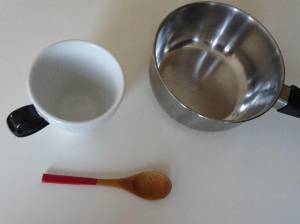
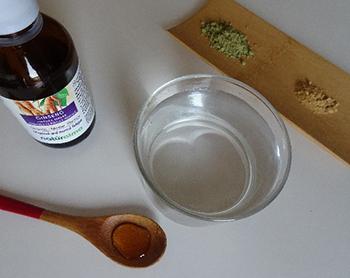
Great tea and the ginger makes it better!!! I didnt use the Ginseng, just because I dont have any lol but it is good!!
Hi Joannaa,
We are happy to hear that you made the tea already and you liked it.
Wishing you a bright, warm, and beautiful Spring!
Organic Matcha Green Tea Powder
https://amzn.to/3tW6l3v
Stainless Steel Mesh Tea Ball
https://amzn.to/36dBXJM
Organic Ginger Root
https://amzn.to/3tHAhQO
Zester and Grater
https://amzn.to/3w7y0kU
Organic Ginger Powder
https://amzn.to/3t9e4vO
Korean Red Panax Ginseng
https://amzn.to/3ibUkkQ
Pure, Raw & Unfiltered Honey
https://amzn.to/3CA05lM
Please support your local suppliers when purchasing ingredients. They need all the help we can give them to survive in these hard times.
Would it work to make a batch of this, store it in the refrigerator and drinknit cold?
Hi Christiana,
You can keep brewed tea in the refrigerator but only for a matter of days.
It will probably start to lose its flavor after the first day. After that, the tea might even grow bacteria, making it unsafe to drink.
Be sure to place the brewed tea in an airtight container. An airtight container will also keep the flavors in without exposing the tea to other more fragrant foods in your fridge, such as onions.
Many blessings and good health!
Once again, the specific ingredients are not mentioned regarding the ginseng. Please always use the Latin names so ingredients are not confused. “In total, 13 species of ginseng are classified under the name ‘Panax’. ”
American Ginseng Panax quinquefolis
Asian Ginseng Panax ginseng, is also known as red or Korean ginseng
Siberian Ginseng Eleutherococcus senticosus
Please BE SPECIFIC!